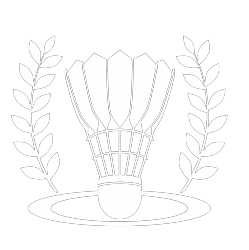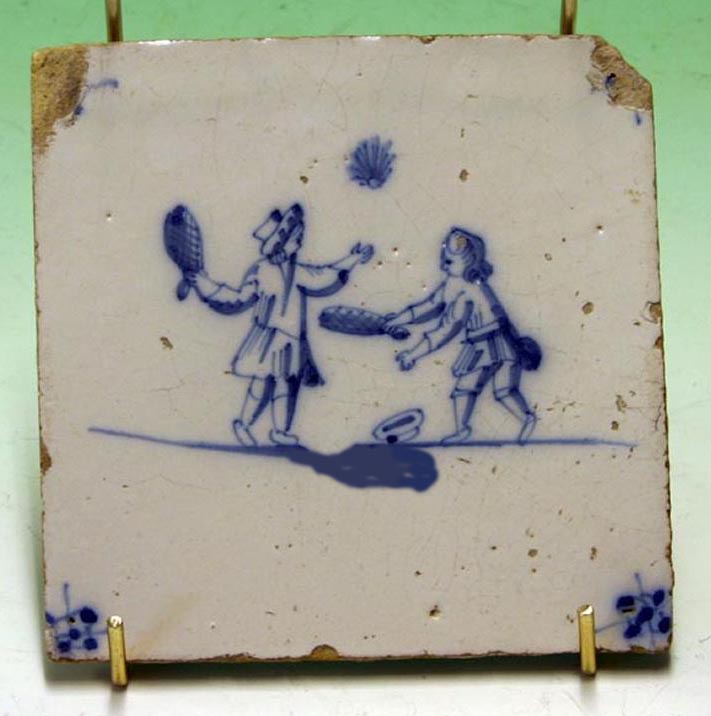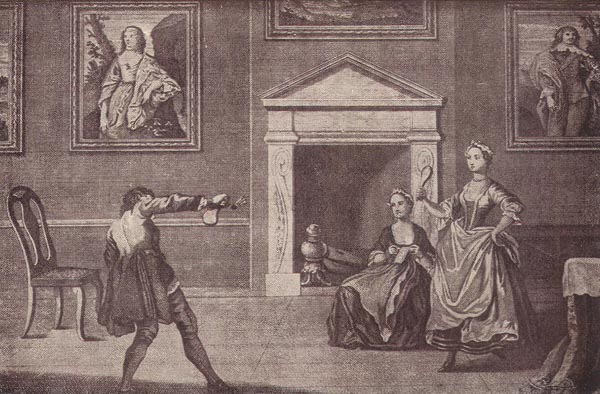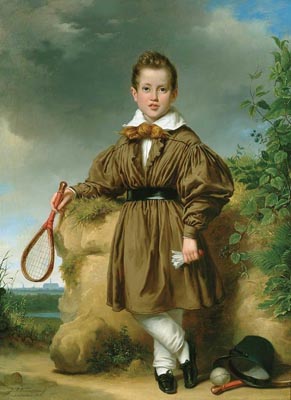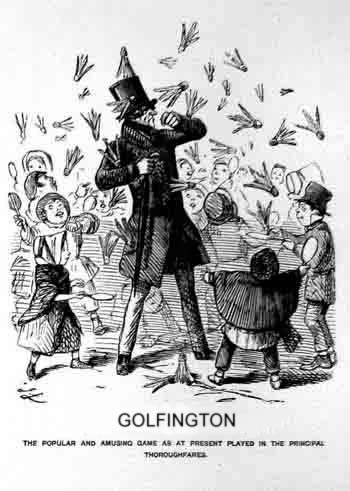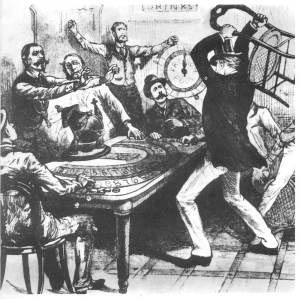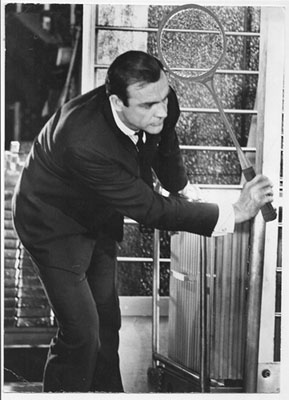The first known image of what we believe to be Golfington is a French print from 1622, showing cherubs outdoors practicising the classic underarm stroke. The text indicates their two companions’ covered wooden trolley contains ‘spare cocks’ and ‘boissons froides’.
A rare Dutch tile from later 17th century shows how the game was also played in the Low Countries by this time. The player on the left is attempting a risky shot over a water hazard, the player on the right steadying himself to catch his opponent should he overbalance into the water!
The Dutch, of course, famously went on to develop the concept of ‘total Golfington’.
By the 1720s, the game was being played indoors as well, as this English illustration shows in detail. The gentleman is attempting to strike a high backhand drive past his female opponent to a hole in the corner. At this time in England, players were permitted to attempt to block their opponent’s shots to the hole with their bat from a set distance, and the lady here can be seen to be attempting a ‘full Grobbelaar’ to that end.
By the early 19th c. Golfington was an established pastime of the landed gentry; their spacious houses and grounds allowing for an abundance of entertaining courses.
But by mid century the game had also become a craze in urban areas, not to the approval of all, as illustrated in this Punch cartoon of 1870.
By this time the game had also become a potent magnet for gambling. Huge wagers were staked at events such as Royal Hendon and Real Miralles and heavy losses combined with suspicions of thrown matches could result in ugly scenes:
Such unchecked gambling was thankfully purged from the game following the enrollment of the ISF as the sport’s governing body in 1893.
The final transformation towards our modern game was the adoption in the 1880s of the larger long handled Golfington racquet.
The ingredients were now in place for the modern version of Golfington, our beloved game, ‘the Sport of Kings(ley)’.
Sean Connery, a lifelong fan, playing Golfington on the set of ‘Goldfinger’.

